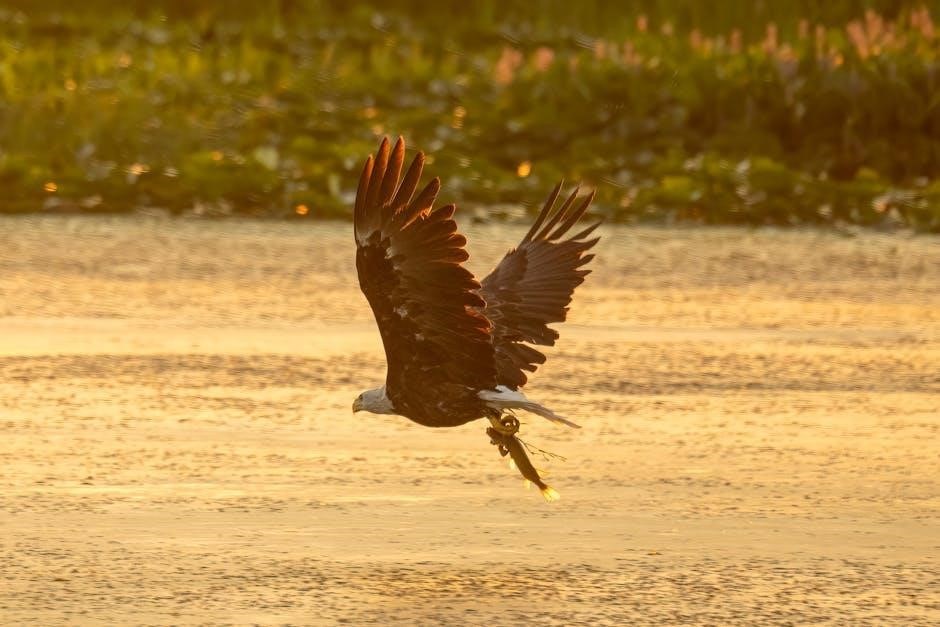Fly size and hook size are critical components in fly fishing, influencing casting, presentation, and overall fishing success. Understanding their relationship ensures effective fly selection and optimal performance.
Understanding the Basics of Fly Size and Hook Size
Fly size and hook size are fundamental concepts in fly fishing, often intertwined but distinct. Hook size refers to the gap between the shank and the point, with larger numbers indicating smaller hooks. For example, a size 20 hook is smaller than a size 10. Fly size, however, relates to the insect or bait the fly imitates, influencing how it presents in the water. Larger flies, like streamers, typically require larger hooks, while smaller flies, such as nymphs, use smaller hooks. The relationship between the two ensures proper balance for casting and presentation. While they are related, they are not interchangeable, as different flies may require specific hook sizes regardless of their overall size. Practical applications often dictate deviations from strict size matching, especially when considering weight, aerodynamics, and fishing conditions. Balancing these elements is key to successful fly fishing.
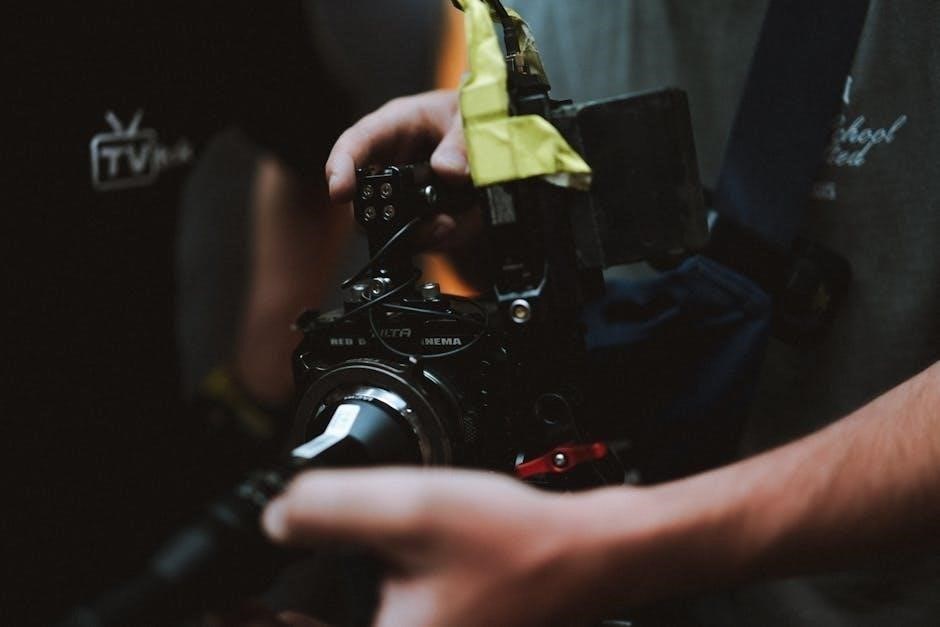
Importance of Matching Fly Size to Hook Size
Matching fly size to hook size is crucial for effective fly fishing. A properly sized hook ensures the fly sits naturally in the water, enhancing its appeal to fish. Mismatched sizes can lead to poor presentation, reducing the likelihood of a strike. For instance, a large fly on a small hook may appear unnatural, while a small fly on a large hook can be cumbersome. Additionally, tippet compatibility is affected, as smaller flies often require thinner tippets to fit through the hook eye. Improper matching can result in casting difficulties or even lost fish. Ensuring the fly and hook size align improves casting efficiency, presentation, and overall fishing success. This balance is essential for achieving the desired action and attracting target species effectively.
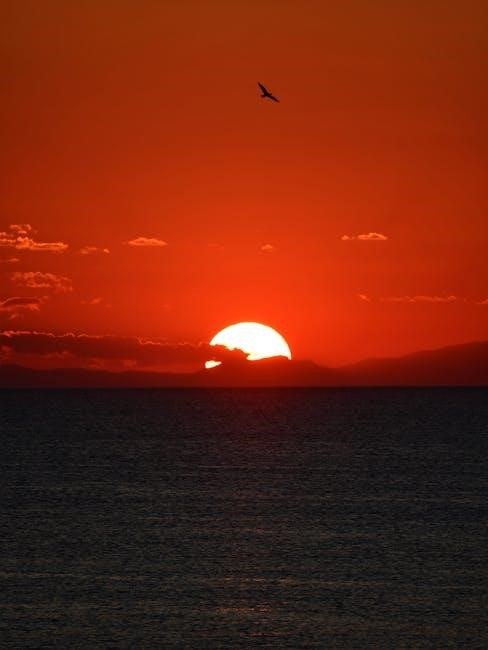
Hook Size and Fly Size Chart Overview
A hook size and fly size chart provides general guidelines, helping anglers match flies to hooks effectively. It considers factors like fly type, water conditions, and casting efficiency.
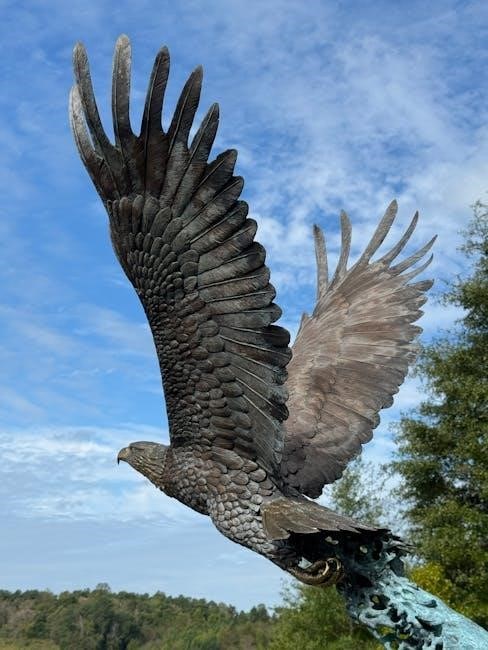
General Guidelines for Fly Size and Hook Size
Matching fly size to hook size is essential for effective fly fishing. A larger hook size (smaller number) typically accommodates bigger flies, while smaller hooks (larger numbers) suit delicate patterns. Tippet compatibility is crucial; for example, a 4x tippet may not fit through the eye of a size 20 fly. Water conditions and fly type also influence size selection. Dry flies and nymphs often require different considerations than streamers or clouser flies. Anglers should consider the aerodynamics and weight of the fly, as these factors impact casting performance. Charts provide general guidelines, but practical experience and adaptability to specific conditions are key. Ensuring the tippet fits through the hook eye and maintaining a balanced presentation are fundamental for success.
How to Read a Fly Size Line Weight Chart
A fly size line weight chart serves as a guide to help anglers match fly sizes with appropriate line weights. These charts typically list fly sizes alongside recommended line weights, considering factors like aerodynamics and fly weight. For instance, larger flies, such as streamers or clouser flies, may require heavier line weights for effective casting. Conversely, smaller flies like nymphs or dry flies are better suited for lighter lines. While these charts provide general guidelines, they should be adapted to specific conditions, such as water resistance or wind. Anglers should also consider the material and design of the fly, as these can influence casting performance. By understanding how to interpret these charts, anglers can make informed decisions to optimize their fly fishing experience.
Factors Influencing Fly Size Selection
Water conditions, fish species, and leader/tippet compatibility significantly influence fly size selection. Environmental factors like wind and current also play a role in determining the optimal fly size for success.
Water Conditions and Fly Size
Water conditions play a pivotal role in determining the appropriate fly size; In swift currents, larger flies or weighted patterns like nymphs and streamers are often necessary to sink quickly and maintain depth. Conversely, in calm or clear water, smaller, more delicate flies are preferred to avoid spooking fish. Surface resistance is a key factor; dry flies need to land gently, while nymphs must break through the surface effortlessly. Additionally, water clarity influences visibility, with brighter or more visible flies used in murky conditions. The ability of the fly to perform under varying water conditions ensures effective presentation and increases the chances of a successful catch.
Fish Species and Fly Size Preferences
Fish species play a significant role in determining the appropriate fly size. Larger predators like bass or pike often prefer bigger flies, such as size 2 Clouser or Zonkers, which imitate substantial prey. In contrast, trout typically favor smaller flies, ranging from size 10 to 20, depending on the specific conditions and the naturals they are feeding on. Carp, for instance, can be targeted with specialized flies that are both visually appealing and durable enough to withstand their strong fights. The design and weight of the fly also matter, as certain species may require patterns that sink quickly or float delicately. Matching the fly size to the target species ensures a more natural presentation and increases the likelihood of a successful catch.
Leader and Tippet Compatibility
Leader and tippet compatibility with fly size is crucial for a smooth fishing experience. Tippet sizes and fly sizes are inversely related, meaning a higher number indicates a smaller diameter. For instance, a 4x tippet may not fit through the eye of a size 20 fly, requiring anglers to either use a smaller tippet or a larger fly. Compatibility ensures proper presentation and prevents issues like stiffness, which can hinder a natural fly movement. Tippet sizes typically support three to four fly sizes before performance is compromised. Choosing the right balance ensures the fly behaves naturally in the water, increasing the chances of a successful catch. Proper compatibility also prevents tippet damage and ensures the fly sinks or floats as intended, depending on the fishing scenario.

Understanding Hook Sizes
Hook size refers to the gap between the shank and point, with larger numbers indicating smaller hooks. Scud hooks have shorter shanks and wider gaps, while streamer and nymph hooks feature longer shanks for larger flies. Zonkers, with weight and rabbit strips, are bulkier and harder to cast.
Standard Hook Sizes and Their Applications
Standard hook sizes are categorized by numbers, with larger numbers indicating smaller hooks. Hooks range from size 2 to 24, with size 2 being the largest and size 24 the smallest. Larger hooks (sizes 2-6) are ideal for streamers, clouser flies, and zonkers, which are bulkier and heavier. Medium-sized hooks (sizes 8-12) are versatile and commonly used for nymphs and dry flies like green drakes and stoneflies. Smaller hooks (sizes 14-20) are preferred for delicate presentations, such as tiny nymphs or dry flies, ensuring a natural appearance. The hook size must align with the fly’s weight and aerodynamics to maintain balance during casting. Properly matching hook size to fly size ensures better presentation and increases the chances of a successful catch.
Specialized Hooks (Scud, Streamer, Nymph)
Specialized hooks are designed for specific fly types, enhancing performance and presentation. Scud hooks feature a shorter shank and wider gap, ideal for small, delicate patterns like caddis and mayfly emergers. Streamer hooks have longer shanks, suitable for larger, weighted flies such as Clouser minnows and Zonkers, which require more material and movement. Nymph hooks are also long-shanked, designed for beadhead nymphs and egg patterns, ensuring the fly sinks naturally. While hook size and fly size are related, they aren’t interchangeable. For instance, a size 10 hook can work for both a dry fly and a nymph, but larger flies like Clousers may require a smaller hook size to handle their weight and aerodynamics. Proper hook selection ensures the fly performs as intended, improving casting and fishing success.
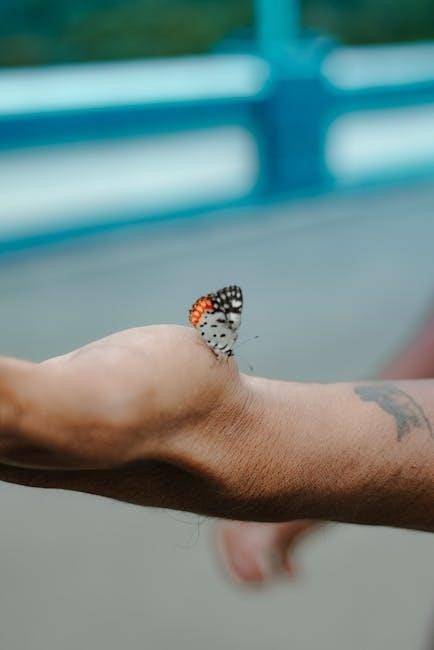
Fly Size and Tippet Compatibility
Fly size and tippet compatibility are crucial, as higher-numbered tippets (smaller diameters) may not fit through the eye of larger flies, requiring careful size matching for optimal performance.
Matching Tippet Size to Fly Size
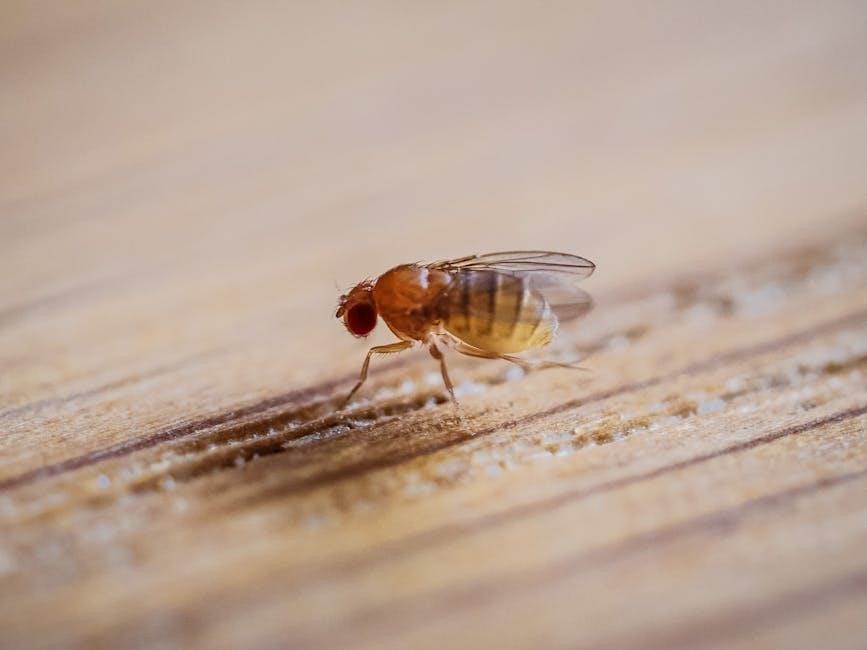
Matching tippet size to fly size is essential for a natural presentation and effective fishing. A tippet that is too thick may be visible to fish, while one that is too thin may not straighten properly when casting. Generally, the tippet size should correspond to the fly size, with smaller flies requiring lighter tippets and larger flies needing heavier ones. For example, a size 20 fly typically pairs well with a 5X or 6X tippet, while a larger fly, such as a size 4 streamer, might use a 2X or 3X tippet. Proper matching ensures the fly behaves naturally in the water, increasing the chances of a successful catch.
Challenges with Small Fly Sizes and Tippet Fit
Small fly sizes present unique challenges, particularly regarding tippet fit. A tippet that is too thick may struggle to pass through the small eye of a tiny fly, such as a size 20 or smaller. This can lead to poor presentation and casting difficulties. Additionally, small flies often require lighter tippets to maintain a natural drift or sink, but overly thin tippets may lack the strength to handle larger fish. Anglers must balance tippet size and fly size carefully to ensure proper fit and performance. Using a needle to clear debris from the hook eye can sometimes resolve fit issues. Proper tippet-to-fly matching is crucial for effective fishing, especially when targeting species requiring small flies, such as trout or panfish.
Practical Applications of Fly Size
Fly size significantly impacts fishing success, with larger flies like streamers targeting aggressive predators, while smaller flies, such as nymphs and dry flies, attract selective feeders. Size selection depends on water conditions, fish behavior, and presentation needs, ensuring effective casting and natural movement. Proper sizing enhances the likelihood of strikes and successful hooking, making it a critical factor in fly fishing strategy.
Dry Flies and Nymphs Size Selection
Dry flies and nymphs require careful size selection to match natural insect hatches and aquatic life. Dry flies should mimic the size and shape of surface insects, while nymphs must resemble subsurface forage. Larger dry flies, such as size 10-12, are effective for visible hatches, while smaller sizes (16-20) are better for selective trout. Nymphs, ranging from size 12-18, are chosen based on water depth and target species. Tippet size must align with fly size to ensure proper presentation and avoid detection. In clear water, smaller flies are preferred, while larger flies work well in murky conditions. Matching the hatch and adjusting fly size according to fish behavior enhances the likelihood of successful strikes, making size selection a critical skill for fly anglers.
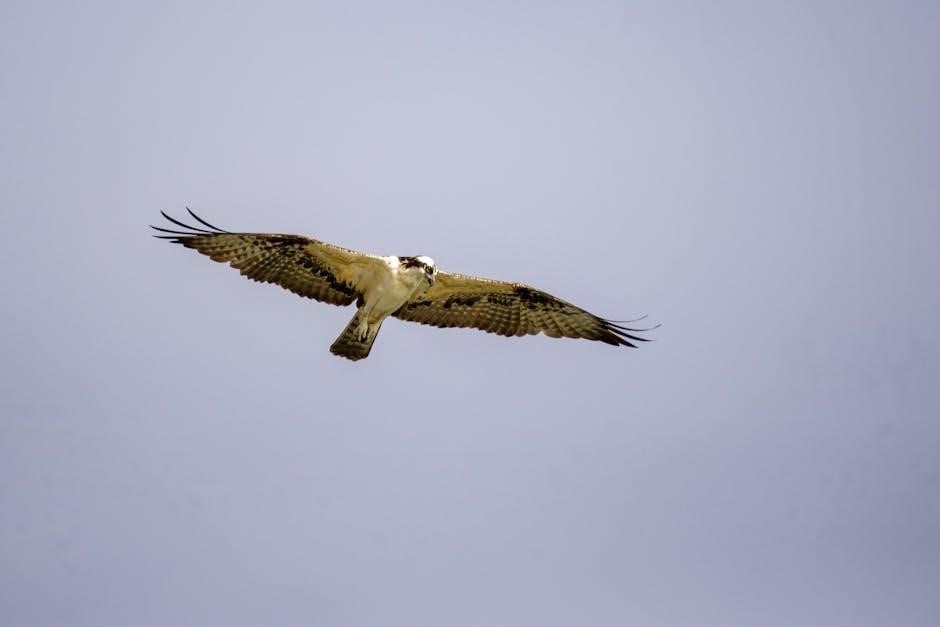
Streamer and Clouser Fly Size Considerations
Streamer and Clouser flies are designed to imitate larger prey, such as baitfish or leeches, making their size selection crucial for targeting larger fish. These flies often range from size 2 to 8, with larger sizes reserved for aggressive predators in deeper waters. Clouser flies, with their weighted eyes, are particularly effective in swift currents, where their size and movement attract attention. Streamers, however, can vary widely in size depending on the target species and water conditions. While smaller streamers (size 6-8) are ideal for trout, larger patterns (size 2-4) are better for species like pike or bass. The size of the fly must also balance with the rod’s weight and the angler’s casting ability, as larger flies can be cumbersome on lighter rods. Adjusting the size based on water clarity and fish behavior ensures optimal presentation and effectiveness.
Specialized Flies (Zonkers, Carp Flies)
Zonker flies, known for their weighted, bulky design, are typically sized between 4 to 10 and are ideal for targeting larger predators like trout or bass. Their rabbit strip tails create movement, making them highly attractive in deeper waters. Carp flies, designed for sight casting to carp, often range from size 4 to 8 and feature materials like foam or bead eyes for visibility. These flies require careful size selection to match the target species’ preferences and water conditions. Zonkers, being heavier, can be challenging to cast on lighter rods, while carp flies emphasize precision and presentation. Both demand attention to detail in size and design to ensure effectiveness and appeal to their intended quarry.
In conclusion, understanding fly size and hook size is crucial for effective fly fishing. Proper selection enhances success and the overall angling experience. Explore resources for further learning.
Final Thoughts on Fly Size Selection
Selecting the right fly size is a balance of art and science, requiring consideration of water conditions, fish behavior, and equipment compatibility. While fly size charts provide guidance, they should not be followed rigidly, as factors like wind, current, and fly weight can influence decisions. Practical experience and observation are key to refining your approach. For instance, smaller flies may require adjusting tippet size to ensure proper presentation, while larger flies like streamers demand attention to casting technique. Additionally, maintaining clean hook eyes and using the right tools, like a hook gauge, can enhance your fly fishing efficiency. Ultimately, flexibility and adaptability are essential for success. Exploring resources like the Orvis Learning Centre or Tom Rosenbauer’s insights can further deepen your understanding of fly size selection and its impact on your angling experience.
Resources for Further Learning
For anglers seeking to deepen their understanding of fly size selection, numerous resources are available. The Orvis Learning Centre offers comprehensive guides and videos, while Tom Rosenbauer’s insights provide practical tips. Reddit threads, such as those found in r/flyfishing, share community knowledge and favorite flies. YouTube channels like Ventures Fly Co. and The Fly Fisherman offer tutorials and gear reviews. Additionally, resources like the “Pick the Right Fly” eBook and year-round hatch charts are invaluable for matching flies to conditions. Exploring these resources can enhance your fly fishing skills and broaden your knowledge of fly size and hook size relationships. Remember, continuous learning and adaptation are key to mastering the art of fly fishing.
